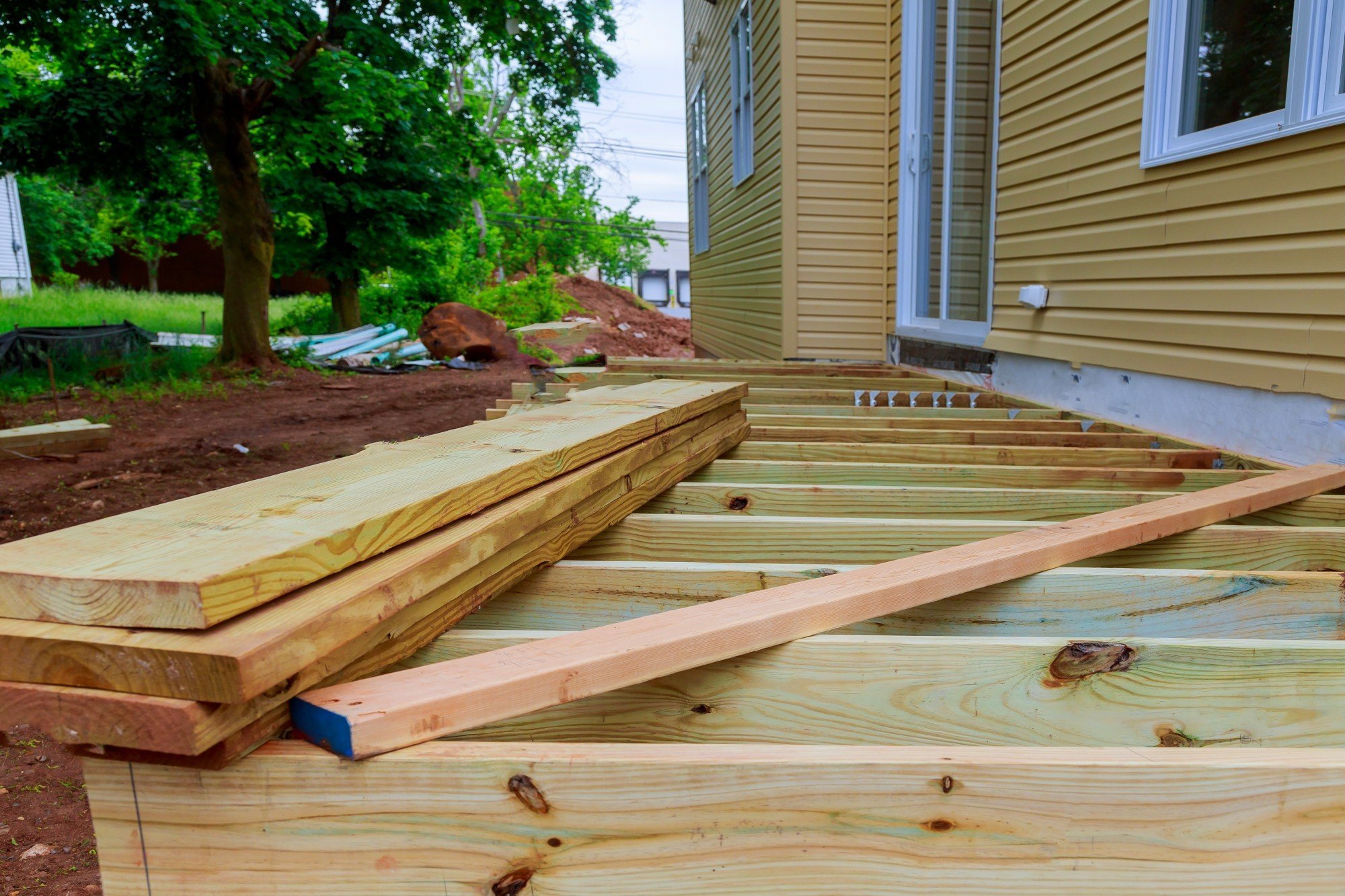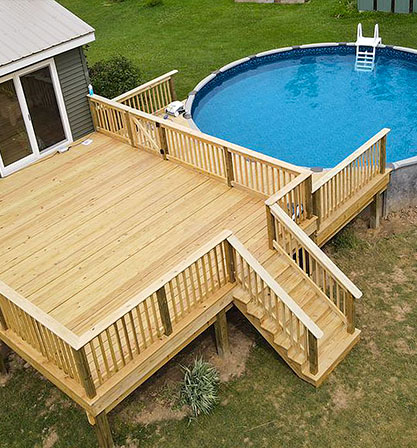Before summer arrives, get advice from a skilled deck installer Austin to get your project moving.
Before summer arrives, get advice from a skilled deck installer Austin to get your project moving.
Blog Article
Exactly how to Choose the Right Products for Your Deck Setup Task
Selecting the ideal products for your deck setup project can seem complicated. There are countless factors to think about, from resilience and maintenance to visual appeals and environmental influence. The option in between standard wood and composite materials, each with its own collection of benefits and drawbacks, can be specifically challenging. The secret is to balance your spending plan, layout preferences, and way of life needs to create a deck that will certainly boost your outside room for many years to come.
Recognizing the Different Kinds of Deck Materials
When embarking on a deck installation task, the selection of materials ends up being a pivotal choice. Different alternatives are readily available, each with distinct attributes and aesthetic appeal. Traditional wood, as an example, provides a timeless, all-natural appearance and is normally more economical. Nonetheless, it can warp gradually and needs regular upkeep. Compound materials, on the various other hand, are a mix of wood and plastic, supplying durability and resistance to weather elements. They require much less maintenance compared to timber but are generally extra pricey. One more choice is plastic, which is practically maintenance-free and immune to insects and rot, albeit much less natural-looking. By recognizing these distinctions, house owners can make a more informed choice on the most ideal deck material for their specific demands.
Evaluating the Sturdiness and Maintenance Requirements of Deck Materials
Analyzing the sturdiness and upkeep needs of deck materials is a critical action in deck installment. Sturdiness includes the material's capacity to endure severe weather conditions, wear and tear, and its longevity. Cedar and redwood are naturally resistant to rot and insects, making them durable choices. On the various other hand, pressure-treated timber, while resilient, may call for more maintenance because of its sensitivity to cracking and warping.
Recognizing maintenance needs is just as vital. Some materials call for routine securing or staining to keep their appearance and stand up to moisture damage, while others, like composite decking, demand much less upkeep. By reviewing these factors, one can pick one of the most ideal outdoor decking material, ensuring a balance in between longevity, maintenance requirements, and visual allure.
Price Analysis: Comparing Timber and Composite Decking
Although cost might initially feel like a second issue, it is a considerable factor when contrasting timber and composite outdoor decking. Timber, usually a less costly choice, has a lower upfront cost. Over time, maintenance costs can collect, possibly making wood much more expensive in the long run. These upkeep expenses may consist of discoloration, sealing, or replacing harmed boards. On the other hand, composite outdoor decking, while more expensive originally, calls for less upkeep, possibly lowering long-lasting expenses. It's important to bear in mind that composite decking isn't impervious to use and tear, and substitute costs can be high. Prospective deck owners must consider their spending plan and desire to preserve their decks when deciding between wood and composite decking.
Aesthetics and Design Versatility of Decking Products
While price is a crucial consideration, the visual charm and layout flexibility of outdoor decking materials likewise play a significant duty in the decision-making procedure. Various materials offer differing levels of aesthetic appeal. Natural timber outdoor decking gives a classic, ageless appearance, while composite materials supply a large variety of shades and textures to suit varied tastes and designs. In a similar way, design flexibility refers to the ability to shape and adjust the decking material to fulfill certain design requirements. Timber, for example, offers high design flexibility as a result of its ease of reducing and shaping. Composite materials, while less adaptable in design, are still versatile enough for the majority of deck styles. These factors, therefore, are essential determinants in the option of decking material.
Ecological Effect of Decking Products
When picking decking products, one need to think about not just aesthetics and durability, but additionally the ecological influence. It is necessary to examine the sustainability of materials and discover recycled decking options. In addition, comprehending the possible impact on neighborhood environments will ensure an extra environmentally liable option.
Evaluating Product Sustainability
In the world of deck building, analyzing material sustainability is an important step. This includes reviewing the environmental impact of each potential material, thinking about elements such as the power needed for its manufacturing, its carbon footprint, and its end-of-life disposal or reusing choices. As an example, wood is an eco-friendly resource, but unsustainable logging methods can bring about deforestation. Additionally, composite outdoor decking products frequently combine timber and plastic, minimizing the demand for new wood but raising reliance on fossil gas. Light weight aluminum and various other steels might be much more sturdy and recyclable, yet their removal and handling can be energy-intensive. Hence, the option of decking products ought to stabilize functionality, looks, cost, and sustainability to make sure a liable and long-lasting installation.
Recycled Decking Choices

Composite decking is especially preferred because of its toughness and convenience of upkeep. It's resistant to rot, insects, and fading, making it a resilient choice. Recycled plastic outdoor decking, on the other hand, is highly durable and requires very little maintenance. While these products may bring a higher preliminary price, their longevity and reduced ecological effect make them a sensible financial investment for the eco-conscious house owner.

Influence On Local Ecological Communities
While the advantages of utilizing recycled products for decking can not be overstated, it's just as important to think about the more comprehensive ecological effects of these choices. The removal, processing, and transport of products can greatly affect regional communities. Deforestation for hardwood outdoor decking adds to habitat loss and environment change. Also the production of composite materials can release damaging exhausts. Conversely, using recycled or sustainably sourced materials can help reduce these impacts. In addition, considering the life expectancy of products can lower environmental influence; longer-lasting alternatives require much less regular replacement, therefore saving resources. Correct disposal of old decking is crucial to lessening garbage dump waste. Essentially, an eco-conscious deck job needs cautious product selection, sustainable sourcing, and liable disposal.
Making Your Decision: Tips for Picking the very best Deck Products
As the write-up changes right into the subtopic of "Making Your Final Choice: Tips for Selecting the very best Deck Materials", it is vital to recognize the range of deck materials available. Striking a balance in between toughness and visual appeal is necessary in this option procedure. The adhering to discussion will guide readers in making an informed choice based upon these key factors to consider.
Recognizing Various Deck Products
The job of selecting the right materials for your deck setup can seem discouraging as a result of the large selection of options offered. Understanding the various products can simplify this procedure. Wood is a prominent choice, offering a timeless aesthetic and affordability. Types of wood made use of consist of pressure-treated lumber, cedar, and redwood. Composite products, made from a blend of wood and plastic, are low-maintenance and resistant to rot and bugs. Vinyl or PVC decks are a lot more resilient and require less maintenance than composite materials, but they can look less natural. Lastly, light weight aluminum decks are solid, light-weight, and resistant to rot, however they are also the most why not try here expensive choice. Each material has its very own benefits and drawbacks, making it vital to consider your particular needs prior to making a decision.
Sturdiness vs. Aesthetics Balance
Stabilizing durability with aesthetic appeals can be an obstacle when choosing deck products - deck installation near me. High-traffic locations might necessitate long lasting products like composite decking, which endures wear and tear yet might lack the all-natural appeal of wood. Homeowners require to strike a balance, taking into consideration both the deck's useful needs and their aesthetic choices.
Final thought
Finally, picking the ideal materials for your deck installment project calls for mindful factor to consider of factors such as longevity, maintenance, expense, looks, and environmental influence. Whether you go with traditional timber or composite products, your selection visit ought to line up with your budget plan, design preferences, and way of living. Inevitably, the best decking material is one that boosts your exterior area and gives satisfaction for years to find.
Report this page